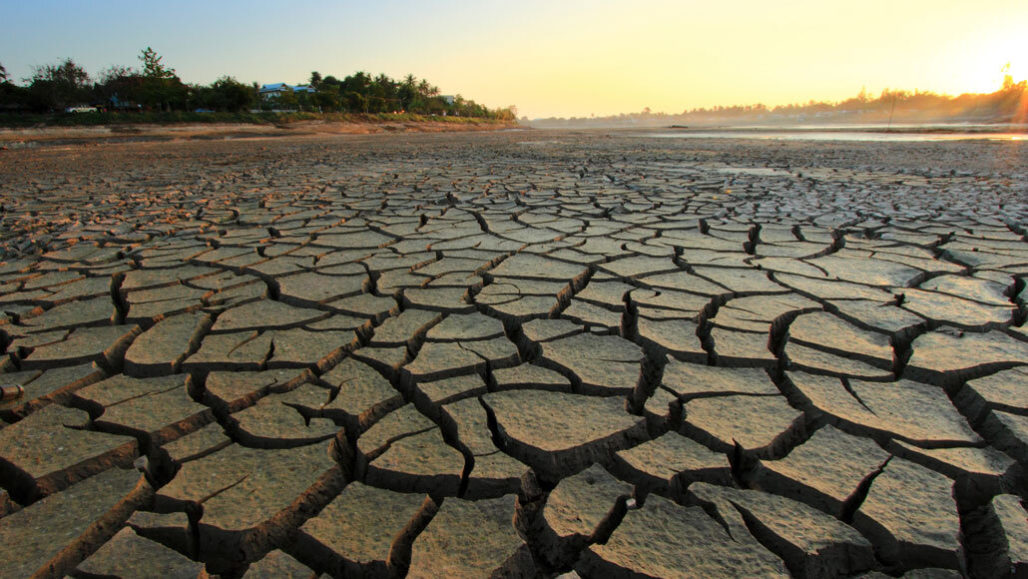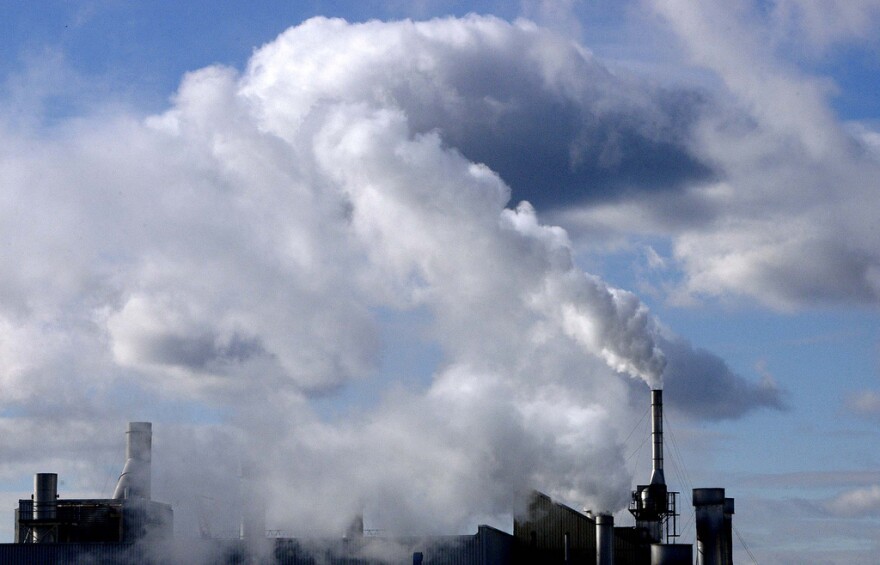
A scientific consensus refers to a general opinion or judgment about a subject. The consensus that Earth's temperature is rising is the best example. The Earth's ocean basins have been warmed by humans' activities like burning fossil fuels. This has shifted the climate. However, this does not mean that all scientists agree. Some groups, such as the American Association of Petroleum Geologists and the National Academy of Sciences, hold non-committal positions. Among elected officials, however, there are dozens who deny the prevailing view.

A new study of over 88,125 climate related studies has shown that there is a solid consensus. Although this survey is not the final answer, it does indicate that people are more inclined to believe well-researched and empirically supported assertions than those that favor one side.
The consensus rests on the fact humans have had an influence on climate since the beginning of time. This is a fact that has been borne out by the results of numerous studies conducted over the past few decades. In other words, the consensus is that the human race is responsible for much of the global warming seen today. Global warming will spread to other areas of the world as carbon emissions continue to rise.
The skeptics are also doing a great job of underestimating consensus. It is clear that most scientists agree with the dominant viewpoint. There is overwhelming evidence supporting the belief that man-made global warming is the dominant cause of Earth's current climate. Scientists might also discover other factors that influence our planet's temperature.
You can find the truth best by doing research. NASA Global Climate Change, for example. It is a collection of citations from peer-reviewed research papers from various research groups around the globe. It shows the quality and ability of NASA's science to address climate-related questions.

Skeptical Science's study of global warming, which examined more than 12,000 peerreviewed abstracts, is another. This study revealed that 97% of the papers surveyed agreed with the most popular "skeptical", which is that human activity is responsible for the increase in average temperature. What's more, the paper's authors were not naive. They used an algorithm to search for the "skeptical" keywords including cosmic rays, natural cycles, and solar panels. Some of these were ranked near the top of their list of the most interesting citations.
Lastly, let's take a look at the Pew Research Center's recent poll. The results show that only half of Americans believe or know there is a scientific consensus on the subject. Although it is not a secret that the name of global warming is being used, only 19% have a solid grasp of the science behind the issue. This is a shame, as this is a serious problem which must be addressed.
FAQ
How can the world make a transition to a more sustainable future given the challenges presented by climate change?
Sustainability refers to the ability to satisfy current needs while not compromising future generations' ability to do so. Climate change is presenting new challenges. We need to take immediate action to end our dependence on finite resources.
To move towards a more sustainable future, it is important for us to reconsider our current models of consumption and production, as well as our dependence on natural resources such as fossil fuels. We must search for new technologies, renewable energies, and systems to reduce harmful emissions, while still meeting our daily requirements.
Additionally, sustainability must be approached from a holistic perspective. This includes all aspects of production including materials, waste management and reuse strategies as well as energy usage in transport and industry. There are many possible solutions, such as the use of renewable energy like solar, wind, or hydropower; better waste management; increased efficiency of agriculture; improved transport networks; green construction regulations; and sustainable city planning initiatives.
For us to achieve our goal, we must make behavioral changes across all segments of society. Education programs are needed which will support people in understanding the issues related to climate change and how they can contribute positively towards a more sustainable world through micro-actions such as reducing food waste or adopting low-carbon lifestyles.
We can only make significant progress in creating sustainable environments for the future by working together with industry leaders, citizens, and governments.
What are the consequences of climate change for society and the environment?
Climate Change has broad effects on both the environment and society. Climate change is causing a variety of environmental problems, including rising temperatures, extreme weather, sea level rise, and reduced air quality. These changes can have severe consequences for human populations. They can lead to instability, increased poverty, insect-borne diseases and altered migration patterns.
Already, climate change has had a broad range of devastating effects on society and the environment around the globe. Global temperatures are expected to continue to rise and this will only get worse in the future.
One of the most prevalent effects of climate changes worldwide is the rise of ocean levels as a result of melting ice cap. This results in shoreline erosion on many coasts, as well as increased flooding risk for coastal communities. Also, saltwater intrusion occurs, which negatively affects freshwater supplies in coastal areas in many countries.
Due to climate change, extreme weather phenomena such as heatwaves/droughts frequently occur across many countries in the world. These events result in mass destruction of homes or businesses and can lead to relocation or complete loss of life. Additionally, severe storms pose additional risks due to flooding or landlides that can increase damage to infrastructure such roads and railways.
The increasing frequency of wildfires that are caused by climate change has also led to devastating consequences for both habitats and those living nearby.
These drastic changes often lead to displacement or refugee crises. People move out of their homes involuntarily or voluntarily when their communities become unsafe or uninhabitable due to the altered climate.
Dust storms are also increasing in severity worldwide due to increased aridity. This makes it more difficult for asthma sufferers and other respiratory conditions. In addition, pest infestations are expected to increase significantly linked with higher temperature extremes - a phenomenon known as 'greenhouse bug' - leading to further damage to agricultural production that further affects global food insecurity numbers as fewer crops become available at worse nutritional qualities potentially bringing additional hardships upon marginalized populations already barely able make ends meet otherwise.
How does human activity affect climate change
Climate change is caused primarily by human activity. The Intergovernmental Panel on Climate Change(IPCC) states that humans are responsible more than 70% for global warming in the past 20 years.
The release of carbon dioxide from fossil fuels: When fossil fuels are used, like coal, oil, or gas, they cause the atmospheric formation of carbon dioxide. This will increase the atmospheric CO2 levels already present. It acts as a "greenhouse gases" by trapping heat in Earth's atmosphere, increasing temperatures even more. This causes higher ocean levels, as Arctic ice melts. It also scrambles weather patterns across the globe, leading to dangerous storms, droughts, floods and other problems that can affect food production and human health.
Deforestation is the removal of trees that store atmospheric carbon dioxide in their trunks. This happens when they use it during photosynthesis. The albedo is also increased by cutting down forests. It refers to the amount of solar radiation reflected back into space. As well decreases local air quality with deforestation being linked permanently with respiratory issues.
Farming: Between 14% and 18% of global anthropogenic greenhouse gas emissions are attributed to animal agriculture each year. Large amounts of methane gas are released by animal waste due to its richness in methane bacteria. Eating less or none of these products can reduce global warming.
In conclusion, while human activity has had an adverse impact on our environment for centuries, technological advances have made it possible to turn our attention towards the future. We can leverage technology through green innovation to help us move forward in our efforts to reduce climate change and keep everyone safe.
What is the state of international efforts for climate change mitigation?
The current state of international efforts to address climate change is one of unprecedented unity and momentum. Countries all around the globe are increasingly joining forces to find solutions to climate change.
The Paris Agreement is an international framework that encourages collective action. It also provides a framework to allow individual countries and regions to set voluntary targets to reduce emissions. Additionally, the UN Framework Convention on Climate Change (UNFCCC) is providing political guidance and piloting new initiatives such as carbon market mechanisms.
In certain regions, there is progress as well. The European Green Deal, for instance, is a comprehensive set of legislation that aims to rebuild Europe's economy while African countries have committed to the African Renewable Energy Initiative. This Initiative aims to increase Africa’s global share of renewable energy production.
Apart from policy changes, action is visible across sectors and industry. Cities are actively transitioning to sustainable public transport systems. Society at large is adopting more sustainable lifestyles. Companies have been innovating technologies to lower emissions. Investors are switching away from fossil fuels to invest in renewables.
The OECD committee's wealthy members have adopted common standards in reporting on national actions related to climate change. These are the Common Reporting Frameworks (CFR), also known as the 2021 Guidelines.
All of these efforts show an unprecedented focus on climate action. If we are to meet the Climate goals as set out by science and enshrined into international law, governments, civil society, and private sector stakeholders must all continue to build on this momentum.
Statistics
- features Earth's average surface temperature in 2022 tied with 2015 as the fifth warmest on record, according to an analysis by NASA. (climate.nasa.gov)
- This source accounts for about 10% of all the water that enters this highly productive farmland, including rivers and rain. (climate.nasa.gov)
- The 10 countries with the largest emissions contribute 68 percent. (un.org)
- Indigenous peoples and local communities receive less than 1% of all climate funding despite scoring wins for people and nature Africa's broken food markets must be fixed to tackle hunger (climatechangenews.com)
- features Earth's average surface temperature in 2022 tied with 2015 as the fifth warmest on record, according to an analysis by NASA. (climate.nasa.gov)
External Links
How To
How to Invest in Clean Energy, and Support the Transition to Low-Carbon Future
Clean energy is a type of renewable power that doesn't produce any pollution or emit carbon dioxide or other greenhouse gases. It encompasses technologies like solar photovoltaics and wind power. Investing in clean energy sources can bring many environmental advantages, including a reduced reliance on fossil resources, less air pollution, better electrical access, and greater reliability to remote locations.
By buying shares in companies involved in developing clean energy technologies, investors can get involved in these projects. This could include investing in mutual funds, stocks that are publicly traded, or ETFs (exchange-traded fund) that deal with renewable energy. Investors might also consider direct investments in start-ups or venture funds to finance research and development for clean technology technologies.
Clean energy investors are supporting innovation that helps to reduce harmful emissions from conventional sources of electricity generation. This investment could also result in increased economic development, as it creates jobs for skilled labor and engineers related to the production renewable energy systems. The tax incentives programs that encourage investment into green technologies such as wind farms and solar panels can also provide investors with a financial reward.
By investing in companies focused on creating cleaner sources of electricity from renewable resources such as sun, wind, and water while avoiding activities that could harm the environment, we can support the transition to a low-carbon future while reaping economic rewards at the same time.